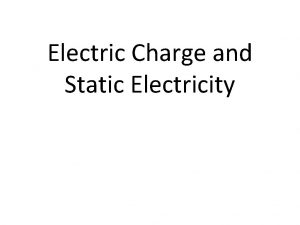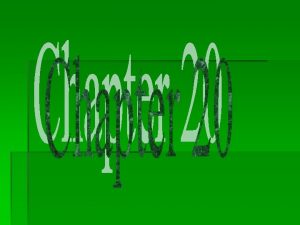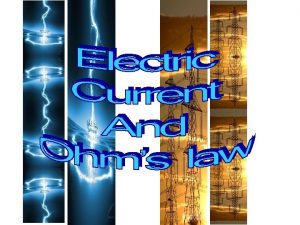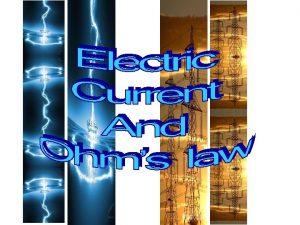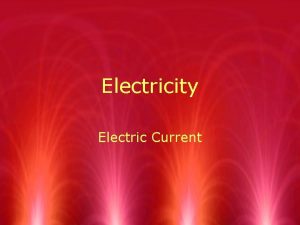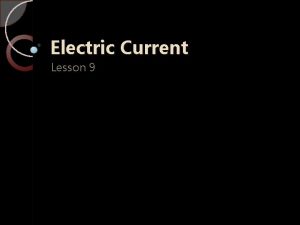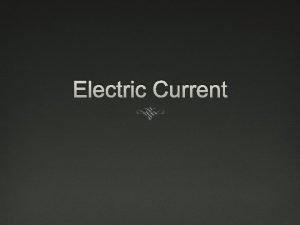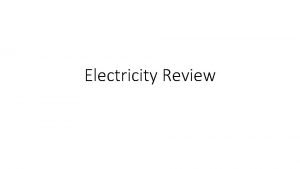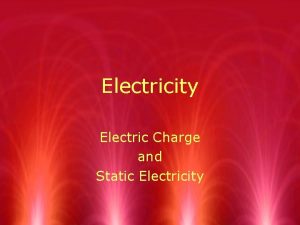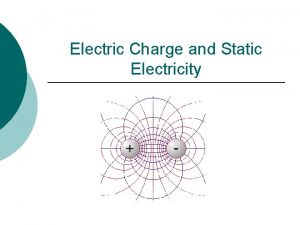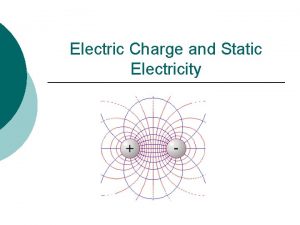Charge and current Outcomes Explain that electric current
















- Slides: 16

Charge and current Outcomes: Explain that electric current is a net flow of charged particles. Explain that electric current in a metal is due to the movement of electrons, whereas in an electrolyte the current is due to the movement of ions. Explain what is meant by conventional current and electron flow. Select and use the equation Q = I x t. (I = ne) Define the coulomb.

How can we model electric circuits? A model can help us to understand how current works in an electric circuit. In this model, the moped riders represent the flow of charge and the pizzas represent the electrical energy carried around the circuit. What do the pizza shop and the house of party-goers represent? 2 of 31 © Boardworks Ltd 2011

A circuit is like a central heating system in a house: low pressure Boiler and pump radiator flow of water There is a pump that High pressure pushes water round the system. The water everywhere starts to move AT THE SAME TIME. There are pipes that CARRY the water. In the pipes the water is FLOWING. © Boardworks Ltd 2003

An electrical circuit is very similar to a central heating system. The bulb in the circuit is like a radiator. An electrical device uses electrical energy supplied by the circuit. Instead of a flow of water, electricity flows in an electrical circuit. The wires are like pipes; they carry the electricity (called current) round the circuit. The electrical current is pushed by the battery, which has the same function as the pump and boiler. The strength of push provided by the battery is called its voltage. © Boardworks Ltd 2003

What are conductors and insulators? In some materials, electric charges are free to flow, but in others, they are not. This means the current cannot flow. Conductors are materials that allow the flow of electric charge. Metals are good conductors. Insulators are materials that do not allow the flow of electric charge. Plastics are good insulators. 5 of 31 © Boardworks Ltd 2011

How do metals conduct electricity? It is the delocalized electrons involved in metallic bonding that allow metals to conduct electricity. The delocalized electrons are free to flow through the metal and so carry a current. Insulating materials do not contain free electrons and so current is unable to flow. Ionic solutions are also able to conduct electricity because they have mobile chargecarrying particles. delocalized electrons 6 of 31 © Boardworks Ltd 2011

Charge and current To make an electric current flow in a circuit, two conditions need to be satisfied 1. The circuit must be complete 2. There must be a source of potential difference Learn Electric current is defined as follows: Electric current is the rate of flow of charge.

Charge and current The current is due to the movement of charged particles these particles are called CHARGE CARRIERS. In metals, these charge carriers are conduction electrons (electrons which are not bound to the nucleus of an atom). These conduction electrons move randomly within a metal, but they will drift towards the + of a cell if the metal is in a complete circuit. ( the charge on 1 electron = 1. 6 x 10 -19 C) In salt solution, molten ionic compound or a gas the charge carriers are IONS (charged atoms or molecules)

What is conventional current? Before the discovery of the electron, scientists assumed that current was due to positively-charged particles moving from the positive terminal around a circuit to the negative terminal. This way of representing the direction of current is called conventional current. It is now know that charge is carried by electrons, flowing from the negative terminal to the positive terminal. This is called electron flow. Today, both conventional current and electron flow can be used to represent the direction of current. 9 of 31 © Boardworks Ltd 2011

Representing current direction 10 of 31 © Boardworks Ltd 2011

What is current? Current is a measure of the rate of flow of electric charge in a circuit. Electric charge is measured in coulombs. Current is measured in amperes (A) using an ammeter. It is calculated using the equation: current = charge time or I = Q t A current of 1 A is 1 coulomb of charge flowing every second. So, a current of 5 A is 5 coulombs of charge flowing every second. 11 of 31 A An ammeter must be connected in series as it measures the current flowing through it. © Boardworks Ltd 2011

Current is a measure of the amount of charge moving per second. I (A) = ΔQ (C) Δt (s) Electrons usually drift in a random direction, but there is no net movement of charge. When a potential difference is applied across a conductor a current is produced. This causes a net movement of charge in one direction, rather than a rapid flow. Electrons flow from a circuit’s negative terminal to positive terminal. However, traditionally current is drawn flowing in the opposite direction, and this is called conventional current. 12 of 27 © Boardworks Ltd 2009

Charge and current Charge (Q) is measured in Coulombs (C) 1 electron has a charge of 1. 6 x 10 -19 Coulombs Q = 1. 6 x 10 -19 C

Charge and current Current So 1 Coulomb contains 1 electrons 1. 6 x 10 -19 That’s 6. 25 x 1018 electrons Q = 1. 6 x 10 -19 C Q = 1. 6 x 10 Q -19 = 1. 6 C x 10 -19 C Q = 1. 6 x 10 -19 C -19 Q Q == 1. 6 xx-1910 10 -19 C C Q = 1. 6 x 10 -19 C Q = 1. 6 x 10 Q-19=-19 C 1. 6 x 10 -19 C Q = 1. 6 x 10 -19 C Q = 1. 6 x 10 -19 CQ = 1. 6 Qx=10 1. 6 x. C 10 -19 C Q = 1. 6 x 10 -19 C -19 Q = 1. 6 x 10 C

Charge and current Current (I) is measured in Amps (A) 1 Amp is defined as 1 Coulomb of charge passing a point in a circuit per second Current = Q t

Charge and current 1. 2. 3. A torch bulb passes a current of 120 m. A. (a) How many coulombs of charge flow through the lamp in 1 minute? Q = It = 0. 120 60 = 7. 2 C (b) How many coulombs of charge flow through the lamp in 1 hour? Q = It = 0. 120 60 = 432 C A car battery is rated as 36 A h. In principle this means it could pass a current of 1 A for 36 h before it runs down. How much charge passes through the battery if it is completely run down? Q = It = 36 60 = 129 600 = 130 000 (2 sf. ) An electron beam in a beam tube carries a current of 125 A. (a) What charge is delivered to the screen of the tube every second? Q = It = 1. 25 10 -4 1 = 1. 25 10 -4 C
 Difference between charge and electric charge
Difference between charge and electric charge Electrons flowing
Electrons flowing Chapter 21 electric charge and electric field
Chapter 21 electric charge and electric field Chapter 21 electric charge and electric field
Chapter 21 electric charge and electric field Coulombs units
Coulombs units Units of a charge
Units of a charge Phân độ lown ngoại tâm thu
Phân độ lown ngoại tâm thu Block xoang nhĩ độ 2 type 1
Block xoang nhĩ độ 2 type 1 Thể thơ truyền thống
Thể thơ truyền thống Thơ thất ngôn tứ tuyệt đường luật
Thơ thất ngôn tứ tuyệt đường luật Chiến lược kinh doanh quốc tế của walmart
Chiến lược kinh doanh quốc tế của walmart Tìm vết của mặt phẳng
Tìm vết của mặt phẳng Hãy nói thật ít để làm được nhiều
Hãy nói thật ít để làm được nhiều Tôn thất thuyết là ai
Tôn thất thuyết là ai Gây tê cơ vuông thắt lưng
Gây tê cơ vuông thắt lưng Sau thất bại ở hồ điển triệt
Sau thất bại ở hồ điển triệt Chapter 17 section 1 electric charge and force answer key
Chapter 17 section 1 electric charge and force answer key

















